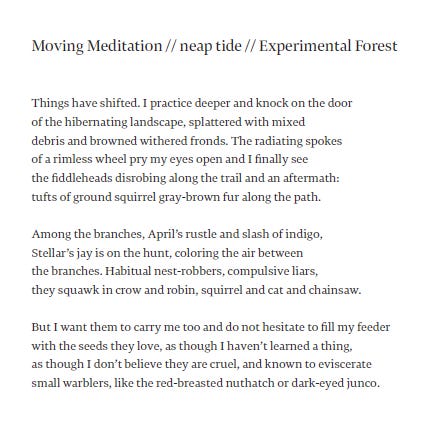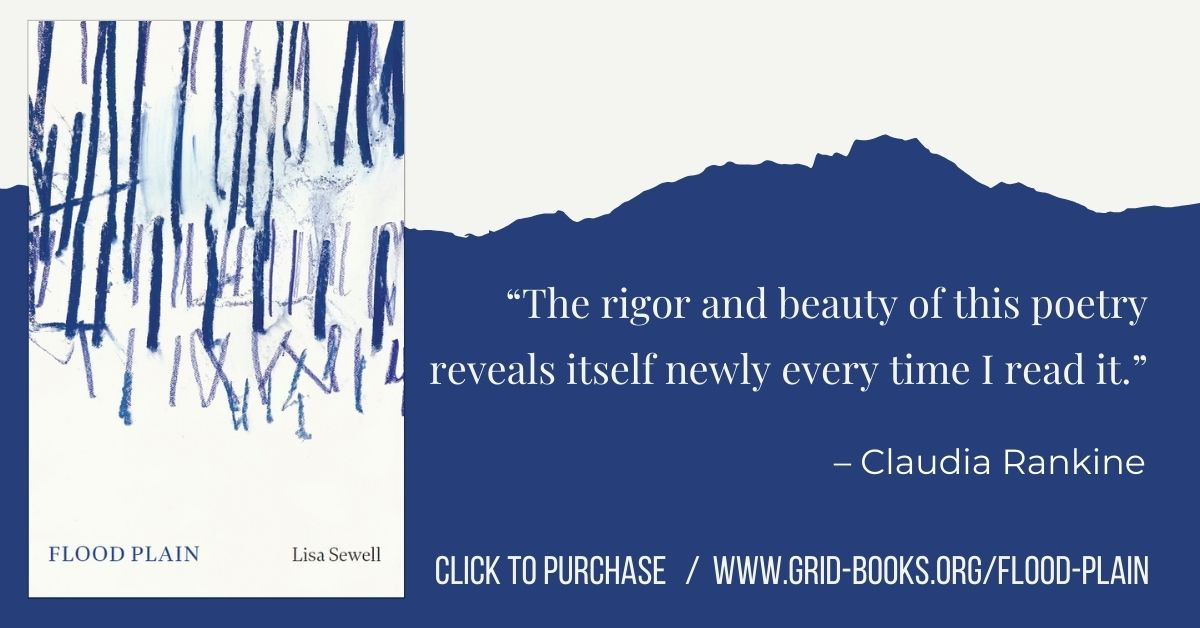In her recently released poetry collection, Flood Plain, Lisa Sewell’s attention to craft is unmistakeable. “Moving Meditation // neap tide // Experimental Forest” is one of a series of sonnets at the center of the collection in which Sewell uses vowel rhyming, or assonance, to enhance her most pressing themes. Rhyming vowel sounds within the middle of lines, as well as sentences that stretch across multiple lines, please the ear and articulate the speaker’s meditations through a series of natural spaces and timeframes.
Sewell’s vowel rhyming makes visible details of a natural world that we too often overlook. And through sound, she underscores their natural unity. Repeated vowels dot the image of “the hibernating landscape” in line two. Long “a” sounds stretch through two consecutive words, and nearly three syllables in a row, coaxing readers to rest, or hibernate, on the view of that landscape for a longer duration.
Lines three through five feature a cascade of long “o” sounds—“spokes / of a rimless wheel pry my eyes open and I finally see / the fiddleheads disrobing.” The wheel seems to roll as it travels, from the beginning of its description (“spokes”), through an enjambment to line four, where the speaker opens her eyes. She then carries the image with another enjambment to line five, and the fiddleheads near or at their harvest season.
The poem concludes with its richest and most diverse assonances: “small warblers, like the red-breasted nuthatch or dark-eyed junco.” Also, two pairs (short “e” and short “u”) and a group of three (short “a”) whose pattering of short syllables recalls the quick and abrupt movement of birds. The result brings a sense of harmony. I’m struck by the effect of these vowel groups, just as I might be upon seeing a sudden abundance of birds, a sign of spring’s return.



Hi, Dan. I love this careful reading and how your focus on sound and form lead to a nuanced reading of the poem. I'm looking forward to reading more.